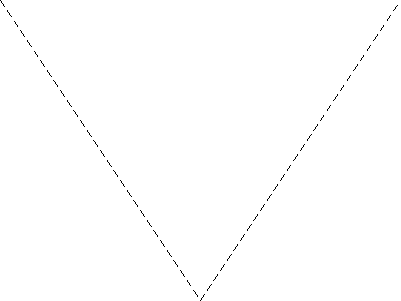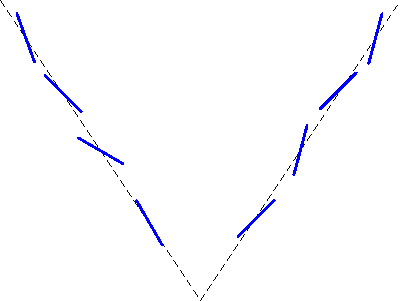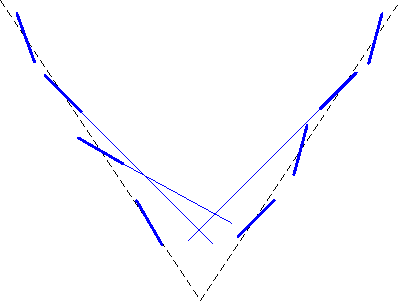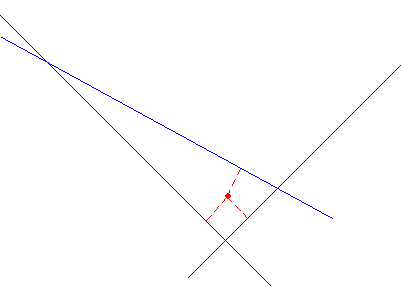
The Theory
Consider two intersecting lines

Figure 1
As input we consider small line elements (called edgels) which are estimated by an edge detector. These edgels are noisy, that is their position and orientation can only be obtained within an interval (symmetric about the true value).

Figure 2: Adding of Edgels
Each edgel defines a line. To estimate the intersection point of the two intersecting lines all the lines defined by the edgels are extended and intersected. That is, we find the point closest to all the lines using least squares estimation.

Figure 3: Extending Edgels to Find Intersections

Figure 4: Finding the Closest Point Using Least Squares Estimation
As you can see, the estimation of the intersection point is biased.
For lines intersecting in an an acute angle
- The estimated intersection point is between the lines.
- The bias increases as the angle decreases.
- The component of the bias in the direction perpendicular to a line decreases as the number of edgels along the line increases.
These observations allow us to explain many parametric studies.